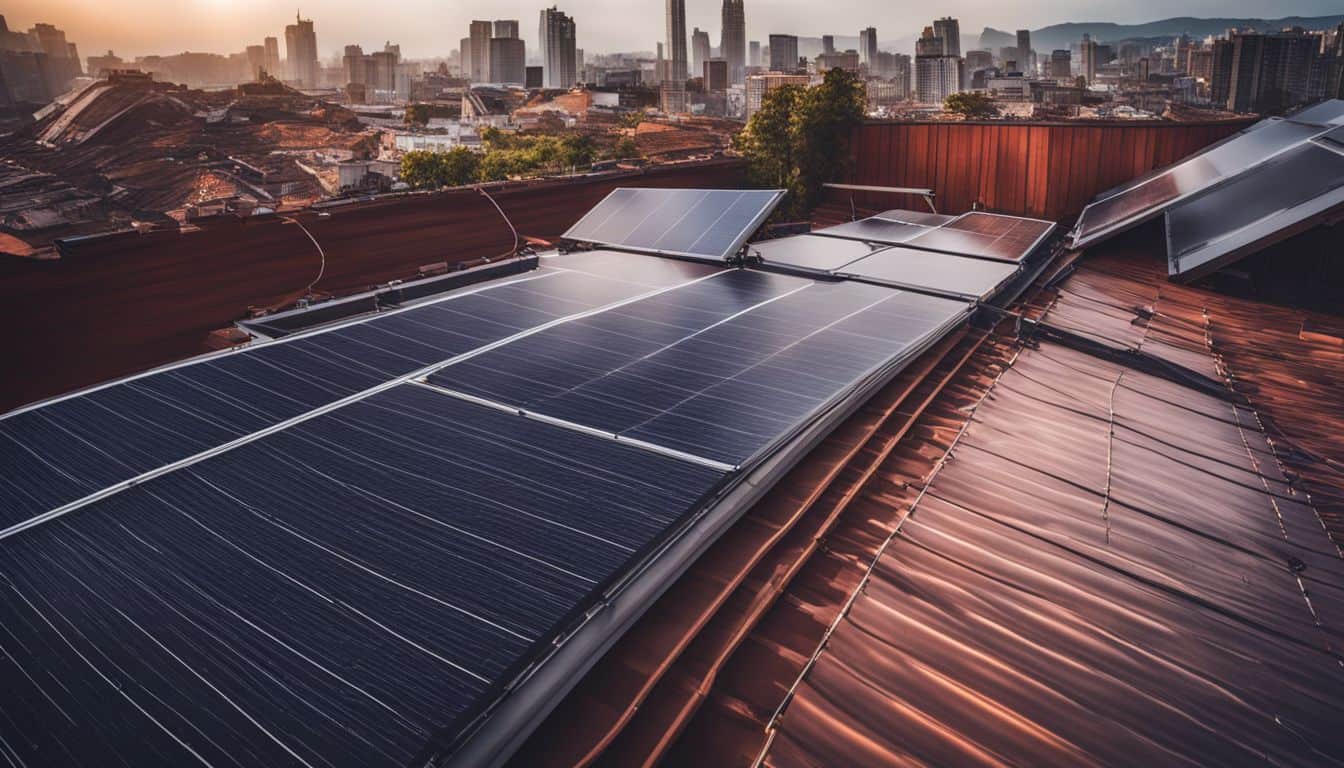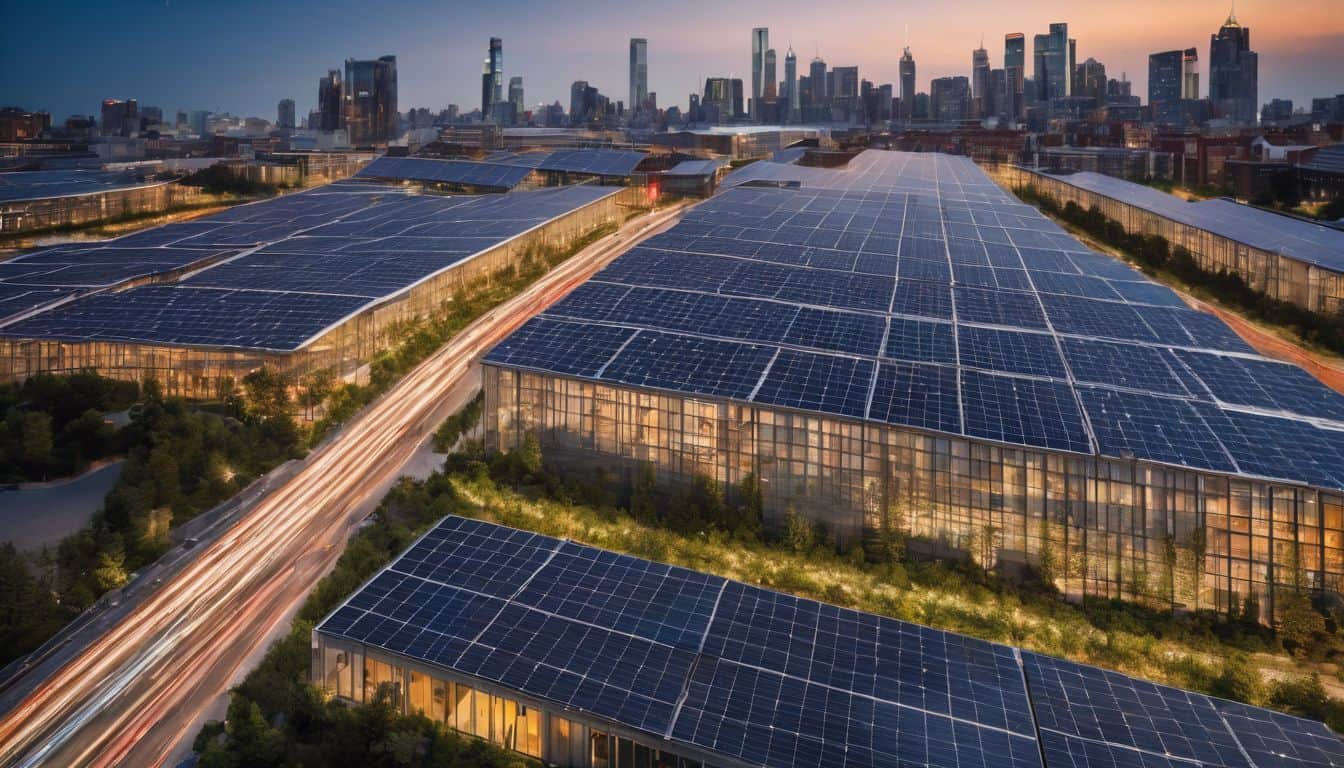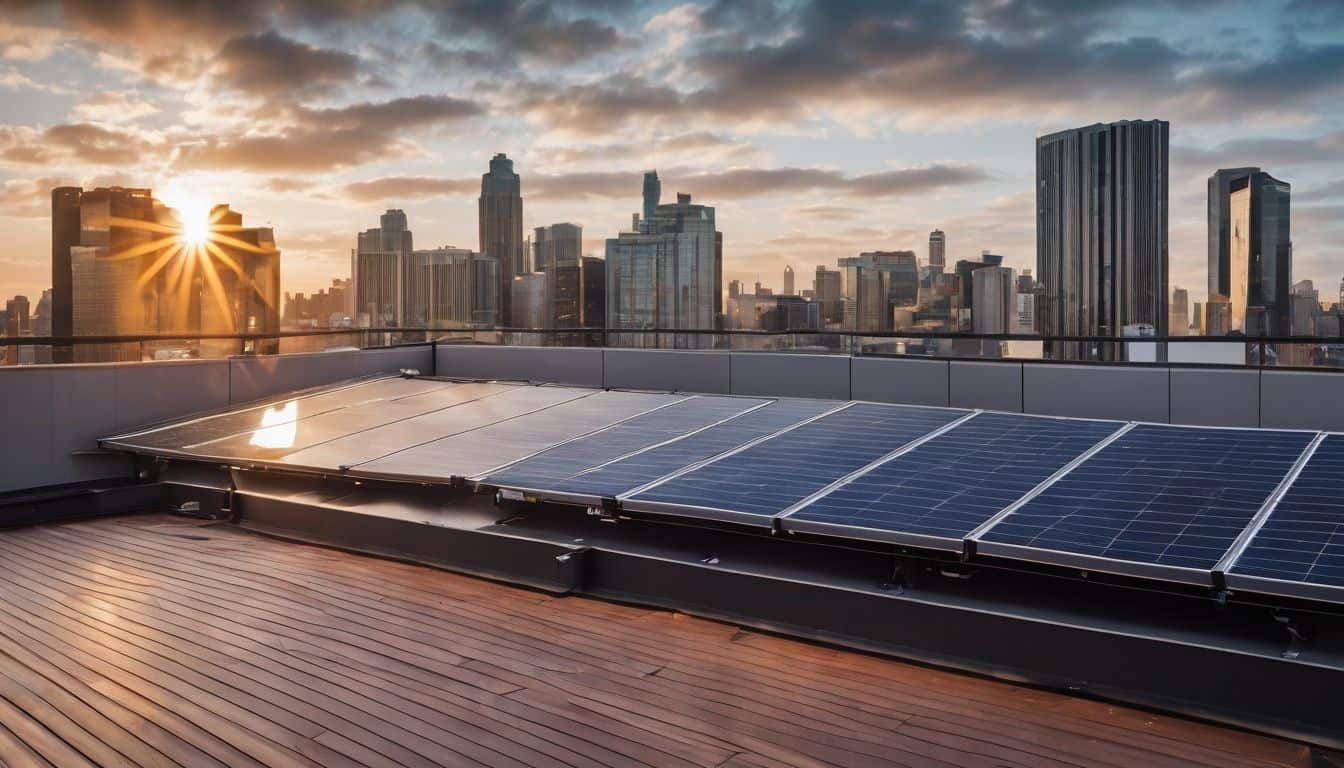Solar heating panels have emerged as a promising solution for sustainable energy in residential and commercial settings. However, like any innovative technology, they come with their own set of challenges. This article will explore the common hurdles faced in solar heating panel projects and provide strategies to overcome them, ensuring successful implementation and optimal performance.
Common Challenges in Solar Heating Panel Projects
Technical Challenges
One of the primary technical challenges in solar heating panel projects is efficiency limitations. While solar technology has made significant strides, converting solar energy to usable heat is not yet 100% efficient. Heat loss during transfer and storage can further reduce overall system efficiency.
Integration with existing heating systems can also pose difficulties. Many buildings, especially older ones, were not designed with solar heating in mind, making retrofitting a complex process that requires careful planning and execution.
Environmental Challenges
Climate variations significantly impact the performance of solar heating panels. In regions with long, dark winters or frequent cloudy days, the effectiveness of solar heating can be compromised. Shading from nearby buildings, trees, or other obstructions can also reduce the amount of sunlight reaching the panels, diminishing their output.
Seasonal performance fluctuations present another challenge. While solar heating panels may provide ample heat during sunny summer months, their output can decrease dramatically during winter when heating needs are highest.
Economic Challenges
The initial solar heating panel installation costs can be substantial, often deterring potential adopters. While prices have decreased over the years, the upfront investment remains a significant consideration for many homeowners and businesses.
Concerns about return on investment (ROI) are common. The time it takes to recoup the initial investment through energy savings can vary widely depending on factors such as local energy prices, system efficiency, and available incentives.
Maintenance expenses, while generally lower than those for traditional heating systems, are still a factor to consider. Regular cleaning, occasional repairs, and potential component replacements contribute to the overall cost of ownership.
Solutions and Strategies
Improving Technical Performance
Advancements in materials and design are continually improving the efficiency of solar heating panels. For instance, selective absorber coatings can enhance heat absorption while reducing heat loss. Vacuum-insulated panels are another innovation that significantly reduces heat loss, improving overall system efficiency.
Optimizing panel orientation and tilt is crucial for maximizing solar energy capture. In the Northern Hemisphere, panels should generally face south and be tilted at an angle roughly equal to the location’s latitude. However, site-specific factors may require adjustments to this general rule.
Implementing effective insulation techniques is essential for minimizing heat loss. This includes insulating the panels themselves and ensuring proper insulation of storage tanks and distribution systems.
For homeowners looking to maximize the performance of their solar heating systems, our guide on mastering solar heating panels offers valuable insights and tips.
Adapting to Environmental Factors
Site-specific system design is crucial for overcoming environmental challenges. This involves carefully assessing local climate conditions, sun paths, and potential obstructions to design a system that performs optimally in its specific location.
Tracking systems can significantly improve energy capture, especially in areas with less-than-ideal sun exposure. These systems adjust the panel orientation throughout the day to follow the sun’s path, maximizing energy absorption.
Hybrid solutions that combine solar heating with other renewable or traditional heating methods can ensure year-round efficiency. For example, a system that integrates solar heating with a heat pump can provide reliable heating even during periods of low solar radiation.

Addressing Economic Concerns
Government incentives and rebates can significantly reduce the initial costs of solar heating panel installation. Many countries and local jurisdictions offer tax credits, grants, or other financial incentives for renewable energy adoption.
Conducting a long-term cost-benefit analysis is essential for understanding the true value of a solar heating system. While the upfront costs may be high, the long-term savings on energy bills, potential increase in property value, and environmental benefits should all be factored into the equation.
DIY options for solar heating projects can be attractive for those looking to reduce costs. From simple solar air heaters to more complex water heating systems, there are numerous DIY projects that can provide significant energy savings with a lower initial investment.
Case Studies
Successful residential implementations of solar heating panels abound. For instance, a homeowner in Colorado reduced their annual heating costs by 70% after installing a solar air heating system combined with improved insulation. The system paid for itself within five years and continues to provide substantial savings.
Commercial solar heating projects have also shown impressive results. A hotel in California installed a large-scale solar water heating system that reduced their water heating costs by 60%. The project provided significant cost savings and enhanced the hotel’s eco-friendly image, attracting environmentally conscious guests.
Innovative community-based solutions are also emerging. In Denmark, the town of Marstal implemented a large-scale solar district heating system that provides heat for over 1,400 homes. The system includes seasonal thermal energy storage, allowing excess summer heat to be used during winter months.
Future Outlook
The future of solar heating panels looks promising, with emerging technologies poised to improve efficiency further and reduce costs. Innovations such as thermochromic materials that change their absorption properties based on temperature could lead to self-regulating panels that optimize performance across varying conditions.
Integration with smart home systems presents exciting possibilities. Imagine a solar heating system that can predict heating needs based on weather forecasts and occupant behavior, automatically adjusting its operation for optimal efficiency.
Solar heating is also becoming increasingly important in sustainable building practices. As building codes evolve to prioritize energy efficiency and renewable energy, solar heating panels will likely become a standard feature in new construction projects.

Conclusion
While solar heating panel projects face various challenges, from technical limitations to economic concerns, numerous strategies and solutions are available to overcome these hurdles. By addressing challenges head-on and implementing effective solutions, we can harness the sun’s power to create more sustainable, efficient, and cost-effective heating solutions for homes and businesses. The future of solar heating is bright, and with the right approach, we can overcome any obstacles in our path toward a cleaner, more sustainable energy future.
For those considering a solar heating project, our guide to solar heating panels for the home provides a comprehensive overview to help you get started.
FAQS
What are some innovative designs that help solar panels blend with buildings?
Several cutting-edge designs allow solar panels to integrate seamlessly with buildings:
- Building-Integrated Photovoltaics (BIPV) incorporate solar cells directly into construction materials like roof shingles, windows, or facades
- Solar roof tiles mimic the appearance of traditional roofing while generating clean energy
- These solutions improve the aesthetics of solar installations and help preserve the architectural integrity of homes and businesses
How can flexible solar panels and plug-and-play systems make installation easier?
Advances in solar technology are making it simpler than ever to install solar heating panels:
- Flexible solar panels can conform to curved surfaces and irregular shapes, opening up new possibilities for integrating solar into building designs
- Plug-and-play systems come pre-assembled and ready to use, reducing the need for complex wiring or extensive professional installation
- These user-friendly options make solar heating more accessible to a wider range of homeowners and businesses
What role does the Internet of Things (IoT) play in solar heating systems?
The Internet of Things (IoT) is revolutionizing the way solar heating systems are monitored and optimized:
- IoT devices with smart sensors can track energy production, consumption, and system performance in real-time
- This data helps users identify opportunities to improve efficiency, reduce waste, and lower energy costs
- IoT technology can also predict maintenance needs and alert users to potential issues before they cause significant problems
- By leveraging the power of IoT, solar heating systems can operate at peak performance and provide maximum benefits to homeowners and businesses
How can solar facades address the challenge of limited roof space?
Solar facades offer a solution for buildings with limited roof space or unsuitable roof layouts:
- These specially designed panels can be installed on exterior walls, turning unused vertical surfaces into energy-generating assets
- Solar facades not only produce clean energy but also provide additional insulation and shade, helping to regulate indoor temperatures
- By expanding the available area for solar panel placement, solar facades make it possible for more buildings to harness the power of the sun
What financial incentives are available to offset the upfront costs of solar heating projects?
Various government programs and incentives can help make solar heating projects more affordable:
- Federal tax credits allow homeowners and businesses to deduct a portion of the cost of installing solar panels from their taxes
- Many states, cities, and utilities offer additional rebates, grants, or low-interest loans to encourage the adoption of solar energy
- These financial incentives can significantly reduce the initial expenses associated with solar heating projects, making them more accessible to a broader range of people
How do solar heating systems provide long-term financial benefits?
Investing in a solar heating system can yield substantial financial rewards over time:
- By generating their own clean energy, homeowners and businesses can dramatically reduce or even eliminate their electricity bills
- Solar panels can also increase property values, providing a solid return on investment when it comes time to sell
- As energy prices continue to rise, the savings from solar heating systems become even more significant
- Over the lifespan of a solar installation, the cumulative financial benefits often far exceed the initial costs










Leave a Reply